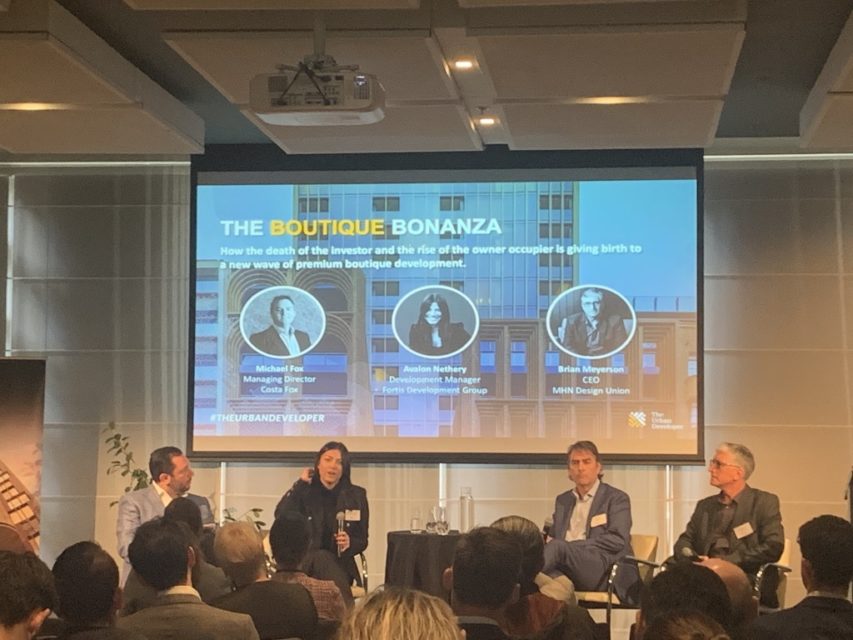Residential Property Market – Where are we heading?

It looks like the same trends from 2018 will continue into 2019, housing values declining due to increased difficulty in gaining access to credit, declining foreign investment, and an oversupply of new stock pushing developers to increase incentives to buyers. According to Justin Brown, Chairman of CBRE Residential, we are 18 months into a 3-year cycle of the market correcting itself, which we should see level out by mid to late 2020.
Despite the downturn, there is still some positive outlooks, with credit availability still tight bringing low mortgage rates, high population growth including immigration and improving affordability, this will all help to offset some of the impact on residential activity.
At The Urban Developer’s 2019 Residential Summit in Sydney last Friday, head of research at Core Logic, Tim Lawless shared some of the facts of what trends lie ahead for the residential market.
Sydney housing values have declined 11.3% since last year and unit values are down 8.2% on last year. According to Lawless, credit accessibility would be a major contributing factor for the market moving forward. There has been a small increase in housing finance approvals according to the ABS statistics released in February, an indication that credit was becoming more available to buyers. While banks stand by their tougher lending standards, a predicted interest rate cut next month could stimulate the market, but by how much is anyone’s guess.
As expected, transaction numbers are lower than a year ago and well below the decade average due to rapid value declines in Sydney and Melbourne. The housing market is faring a bit better than the unit market and is only slightly lower than last year, however, unit sales are substantially lower than the decade average. There has been a large rise in the length of time it takes to sell a property in Sydney over the past year, back in April 2018 the national average was 35 days, this year it is averaging around 60 days.
With sales down and longer selling cycles, total inventory levels remain higher, giving buyers more stock to choose from. This coupled with buyers having more access to information, they are becoming savvier, this in turn means developers are having to offer larger discounts in order to secure a sale. FHB are now only having to pay 5% deposit, making it stronger than the investor market, giving the FHB market potential to grow if they continue to be assisted by the government. Further rates cuts and the new incentives for FHB could potentially bring an easier end to the bottom of the cycle.
Despite the recent value falls, the costs of houses and units in Sydney remains significantly more expensive than other capital cities around the nation and are still showing a high entry point relative to incomes. Currently the dwelling price-to-income ratio for Sydney is still upwards of 9 times an individual’s salary, making saving for a deposit challenging especially with tougher credit policies.
Where does this leave developers?
Those developers who are moving away from large construction projects towards a more specialised boutique offering with a focus on quality over quantity, customisation, and a shift in focus from investors to owner occupiers will gain better traction than most. Developers are also diversifying by maintaining management rights, developing build to rent strategies, and dipping their toes into co-living options.
Projects now need to focus on wellness, placemaking, retail options (mixed use) and ongoing concierge services, which is made possible when developers retain the management rights over their buildings and continuing the customer experience past settlement, adding to the developer’s reputation and legacy.
From a Greenfields perspective larger lot sizes upwards of 400m squared have stronger enquiries and a higher sales rate, with the maximum topping out at $800K in the north west and $650K in south west according to Joshua Rowe from Centaur Property funds management. Smaller builders will struggle with the reduced volumes but are more willing to be competitive on package, offers and inclusions, gearing towards a dialogue change where builders need to partner with developers.
Ultimately, developers need to be flexible and able to move with the market trends, diversify their approach and have a much broader marketing strategy. To accommodate this, a larger spend in marketing is required to establish cut through in an over saturated market, they need a strong focus on building their brands reputation for quality and value, whilst delivering a better final product.